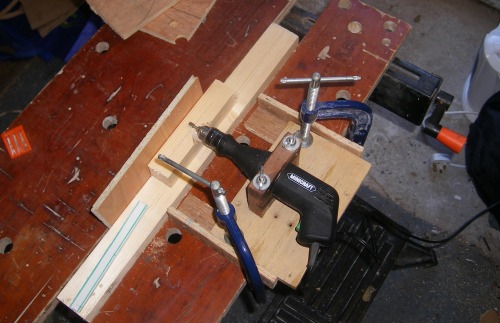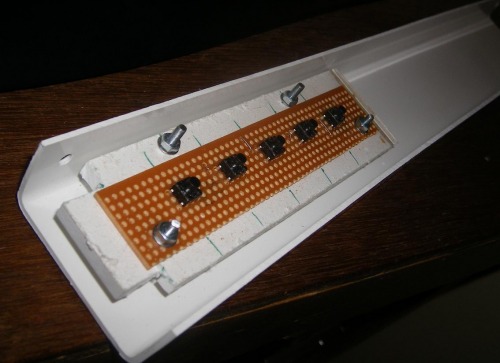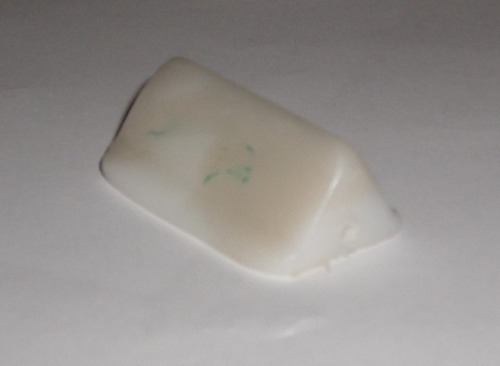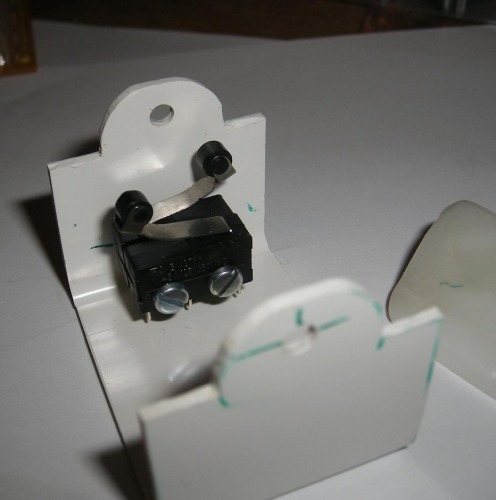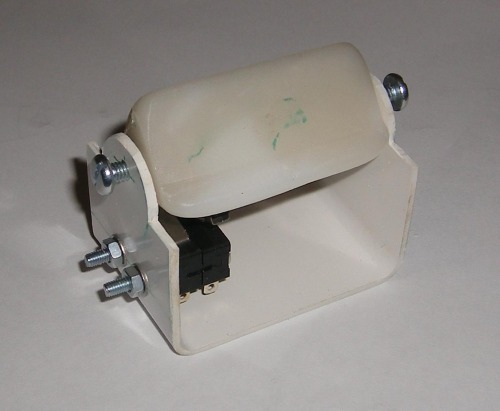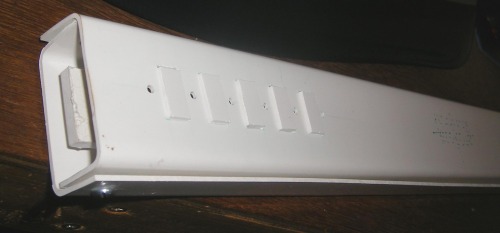
All but the visually impaired will immediately notice that this isn't a robot. Nevertheless, it discusses some interesting electronic, interfacing and mechanical construction techniques.
The aim is to make a guitar-like controller for the excellent Frets on Fire game. I blame 668 for introducing me to this notion. Once you're addicted, I encourage you to blame him, too.
OKay, so I had enough of holding my keyboard upside-down and fingering the function keys while twanging the enter key, so I decided to build an "axe" out of an old joypad. Problem: I didn't have an old joypad. So I bought one off eBay for about $7 (including postage). Welcome to the internals of the Logic 3 USB Joypad.
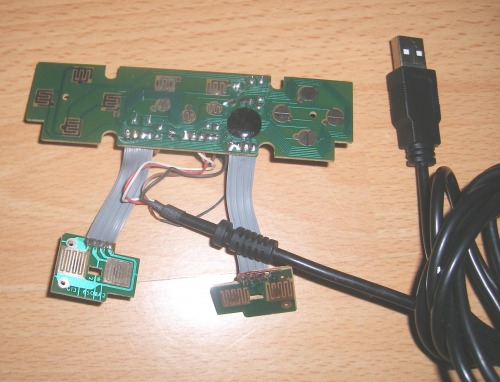
Once it arrived, I tested it was electrically function, then took it apart and threw away all the bits I wouldn't need.
I decided to make this a testbed and as such have run wires from 8 of the buttons (even though FoF only requires 6).

Above, see the topside of the PCB (it is upside-down) labelled with the functions of the various pads.
I added some extension wires to the board, to which the external switches would be connected.

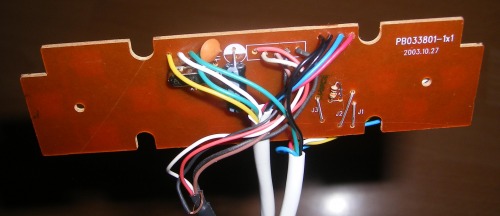
Here are where I soldered them onto the 1, 2, 3 and 4 button pads. You can also see the topside of the board, where I have desoldered the switches for the shoulder buttons and added extension wires in their place. Much neater than soldering onto the pads.
This is the finished interface. Each of the two white wires contains 6 cores. Two of the 6 are "common" (ground) and the other four each pertain to one of the switches.
It works well. A free program (what other sort is there?) called JoystickCursorTool is run before launching the gam. The purpose of this little gem is to take the input fromt he USB joystick and convert it into keystrokes. So any of my wires, when grounded effectively causes that character to be apparently sent from teh keyboard.
I think I know how to make the fretboard and I think I have an appropriate material.
Now, I guess, comes the difficult part. I need ideas for the "strum" switch. I've only once, briefly seen an orignal Guitar Hero controller, and I THINK the strum switch worked in the up and down positions. No problem rigging a SPDT w/ centre off, but I'd like a nicer "feel" to it.
https://www.youtube.com/watch?v=wuOXEsSaE0I


 but you know
but you know

